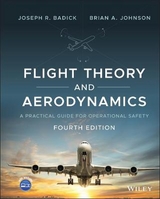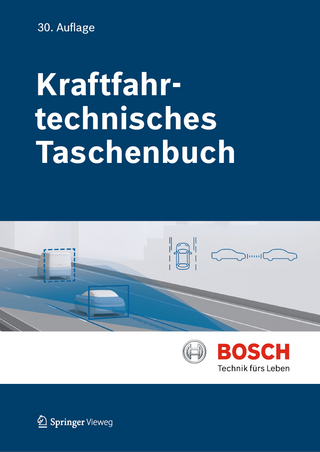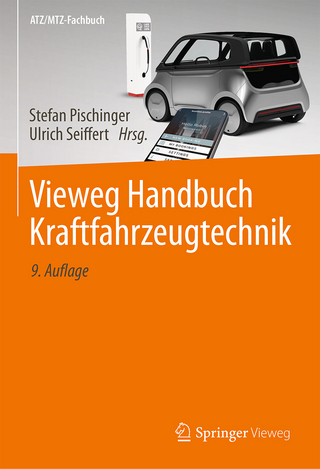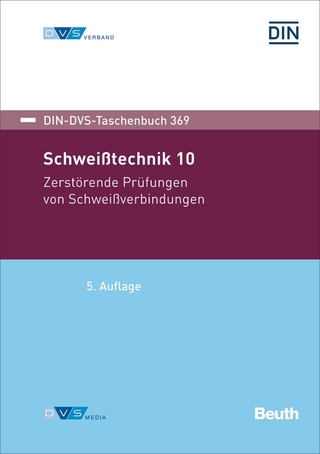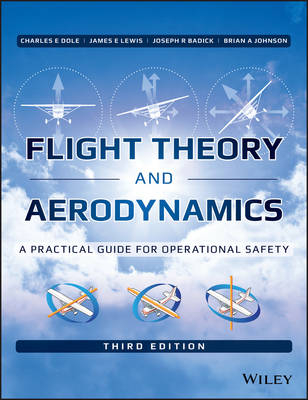
Flight Theory and Aerodynamics
John Wiley & Sons Inc (Verlag)
978-1-119-23340-4 (ISBN)
- Titel erscheint in neuer Auflage
- Artikel merken
The pilot's guide to aeronautics and the complex forces of flight Flight Theory and Aerodynamics is the essential pilot's guide to the physics of flight, designed specifically for those with limited engineering experience. From the basics of forces and vectors to craft-specific applications, this book explains the mechanics behind the pilot's everyday operational tasks. The discussion focuses on the concepts themselves, using only enough algebra and trigonometry to illustrate key concepts without getting bogged down in complex calculations, and then delves into the specific applications for jets, propeller crafts, and helicopters. This updated third edition includes new chapters on Flight Environment, Aircraft Structures, and UAS-UAV Flight Theory, with updated craft examples, component photos, and diagrams throughout. FAA-aligned questions and regulatory references help reinforce important concepts, and additional worked problems provide clarification on complex topics. Modern flight control systems are becoming more complex and more varied between aircrafts, making it essential for pilots to understand the aerodynamics of flight before they ever step into a cockpit.
This book provides clear explanations and flight-specific examples of the physics every pilot must know. * Review the basic physics of flight * Understand the applications to specific types of aircraft * Learn why takeoff and landing entail special considerations * Examine the force concepts behind stability and control As a pilot, your job is to balance the effects of design, weight, load factors, and gravity during flight maneuvers, stalls, high- or low-speed flight, takeoff and landing, and more. As aircraft grow more complex and the controls become more involved, an intuitive grasp of the physics of flight is your most valuable tool for operational safety. Flight Theory and Aerodynamics is the essential resource every pilot needs for a clear understanding of the forces they control.
A former marine, the late CHARLES E. DOLE taught flight safety for twenty-eight years to officers of the U.S. Air Force, Army, and Navy, as well as at the University of Southern California. The late JAMES E. LEWIS was an associate professor of Aeronautical Science at Embry Riddle Aeronautical University in Florida, former aeronautical engineer for the Columbus Aircraft Division of Rockwell International, and retired Ohio National Guard military pilot. JOSEPH R. BADICK has over forty years of flight experience in single, multi-engine, land /seaplane aircraft. Rated in commercial rotor-craft and gliders, with the highest rating of (A.T.P.) Airline Transport Pilot. A licensed airframe and powerplant mechanic, with inspection authorization (I.A.), he has installed numerous aircraft aerodynamic performance (S.T.C's) Supplemental Type Certificates, with test flight checks. He holds a Ph.D. (ABD) in Business from Northcentral University of Arizona and a Master's degree in Aeronautical Science. He was a Naval Officer for 30 years as an Aeronautical Engineer Duty Officer (AEDO), involved in all aspects of aircraft maintenance, logistics, acquisition, and test/evaluation. Currently he is a professor of aviation at a community college in the Career Pilot/Aviation Management degree programs. BRIAN A. JOHNSON is a former airline and corporate pilot who holds a multi-engine Airline Transport Pilot certificate, in addition to Commercial pilot single-engine land/sea privileges. He is an active instrument and multi-engine Gold Seal flight instructor with an advanced ground instructor rating. He holds a Master's degree in Aeronautical Science from Embry-Riddle Aeronautical University and currently serves in a faculty position for a two-year Career Pilot/Aviation Management degree program, in addition to serving as an adjunct faculty member in the Aeronautical Science department of a major aeronautical university.
Preface xi About the Authors xiii 1 Introduction 1 The Flight Environment, 1 Basic Quantities, 1 Forces, 2 Mass, 3 Scalar and Vector Quantities, 4 Moments, 5 Equilibrium Conditions, 6 Newton s Laws of Motion, 6 Linear Motion, 7 Rotational Motion, 8 Work, 8 Energy, 8 Power, 9 Friction, 9 Symbols, 10 Equations, 11 Problems, 12 2 Atmosphere, Altitude, and Airspeed Measurement 13 Properties of the Atmosphere, 13 ICAO Standard Atmosphere, 15 Altitude Measurement, 16 Continuity Equation, 19 Bernoulli s Equation, 19 Airspeed Measurement, 22 Symbols, 26 Equations, 27 Problems, 27 3 Structures, Airfoils, and Aerodynamic Forces 31 Aircraft Structures, 31 Airfoils, 37 Development of Forces on Airfoils, 42 Aerodynamic Force, 44 Aerodynamic Pitching Moments, 45 Aerodynamic Center, 46 Symbols, 46 Problems, 47 4 Lift 49 Introduction to Lift, 49 Angle of Attack Indicator, 49 Boundary Layer Theory, 51 Reynolds Number, 53 Adverse Pressure Gradient, 54 Airflow Separation, 55 Stall, 56 Aerodynamic Force Equations, 57 Lift Equation, 58 Airfoil Lift Characteristics, 60 High Coefficient of Lift Devices, 61 Lift During Flight Manuevers, 65 Symbols, 67 Equations, 67 Problems, 68 5 Drag 71 Drag Equation, 71 Induced Drag, 71 Ground Effect, 77 Laminar Flow Airfoils, 81 Parasite Drag, 82 Total Drag, 85 Lift to Drag Ratio, 87 Drag Reduction, 88 Symbols, 90 Equations, 91 Problems, 91 6 Jet Aircraft Basic Performance 95 Thrust-Producing Aircraft, 95 Principles of Propulsion, 96 Thrust-Available Turbojet Aircraft, 100 Specific Fuel Consumption, 101 Fuel Flow, 102 Thrust-Available Thrust-Required Curves, 103 Items of Aircraft Performance, 104 Symbols, 113 Equations, 113 Problems, 114 7 Jet Aircraft Applied Performance 117 Variations in the Thrust-Required Curve, 117 Variations of Aircraft Performance, 121 Equations, 125 Problems, 125 8 Propeller Aircraft: Basic Performance 129 Power Available, 129 Principles of Propulsion, 131 Power-Required Curves, 133 Items of Aircraft Performance, 139 Symbols, 145 Equations, 146 Problems, 146 9 Propeller Aircraft: Applied Performance 149 Variations in the Power-Required Curve, 149 Variations in Aircraft Performance, 153 Equations, 157 Problems, 157 10 Takeoff Performance 161 Definitions Important to Takeoff Planning, 161 Aborted Takeoffs, 164 Linear Motion, 166 Factors Affecting Takeoff Performance, 168 Improper Liftoff, 171 Symbols, 174 Equations, 175 Problems, 175 11 Landing Performance 179 Prelanding Performance, 179 Improper Landing Performance, 185 Landing Deceleration, Velocity, and Distance, 190 Landing Equations, 194 Hazards of Hydroplaning, 197 Symbols, 199 Equations, 199 Problems, 200 12 Slow-Speed Flight 203 Stalls, 203 Region of Reversed Command, 210 Spins, 212 Low-Level Wind Shear, 216 Aircraft Performance in Low-Level Wind Shear, 218 Effect of Ice and Frost, 221 Wake Turbulence, 222 Problems, 224 13 Maneuvering Performance 227 General Turning Performance, 227 Equations, 242 Problems, 243 14 Longitudinal Stability and Control 245 Definitions, 245 Oscillatory Motion, 246 Airplane Reference Axes, 248 Static Longitudinal Stability, 248 Dynamic Longitudinal Stability, 260 Pitching Tendencies in a Stall, 261 Longitudinal Control, 264 Symbols, 266 Equations, 266 Problems, 266 15 Directional and Lateral Stability and Control 269 Directional Stability and Control, 269 Static Directional Stability, 269 Directional Control, 276 Multi-Engine Flight Principles, 280 Lateral Stability and Control, 284 Static Lateral Stability, 284 Lateral Control, 288 Dynamic Directional and Lateral Coupled Effects, 288 Symbols, 293 Equations, 293 Problems, 293 16 High-Speed Flight 295 The Speed of Sound, 295 High-Subsonic Flight, 297 Design Features for High-Subsonic Flight, 298 Transonic Flight, 301 Supersonic Flight, 305 Symbols, 316 Equations, 316 Problems, 316 17 Rotary-Wing Flight Theory 319 Momentum Theory of Lift, 320 Airfoil Selection, 320 Forces on Rotor System, 321 Thrust Development, 323 Hovering Flight, 324 Ground Effect, 326 Rotor Systems, 328 Dissymmetry of Lift in Forward Flight, 330 High Forward Speed Problems, 333 Helicopter Control, 334 Helicopter Power-Required Curves, 336 Power Settling, Settling with Power, and Vortex Ring State, 338 Autorotation, 340 Dynamic Rollover, 341 Problems, 343 Answers to Problems 345 References 349 Index 353
| Erscheinungsdatum | 29.12.2016 |
|---|---|
| Verlagsort | New York |
| Sprache | englisch |
| Maße | 195 x 241 mm |
| Gewicht | 852 g |
| Themenwelt | Technik ► Fahrzeugbau / Schiffbau |
| Technik ► Maschinenbau | |
| ISBN-10 | 1-119-23340-2 / 1119233402 |
| ISBN-13 | 978-1-119-23340-4 / 9781119233404 |
| Zustand | Neuware |
| Haben Sie eine Frage zum Produkt? |
aus dem Bereich
